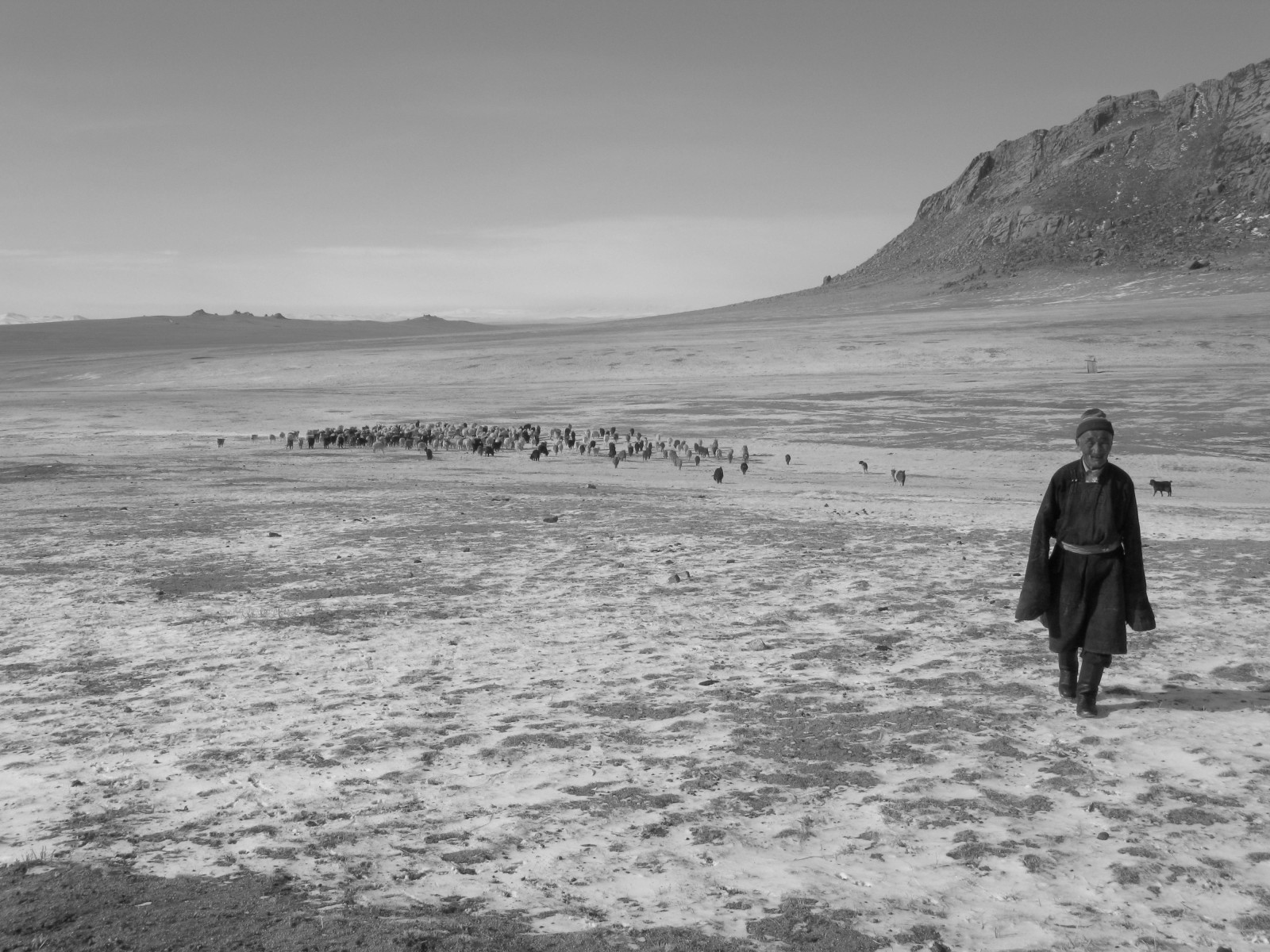The Gobi Dessert
When I did my first camel ride in life I was blessed with a top fit young camel. It was one of the few who liked to sprint some distance… And I can tell that this is quite adrenaline raising. Bumpy and swinging is the best description I think. We were on the way to the sand dunes. For an impression have a look on the photo page again. An incredible narrow golden strips covered with different elevation of sand dunes that continues as far as the horizon. Downhill was the view of a river with little water left. No spot for animals (especially birds) you would think?! Against the odds I saw two species of cranes: the rare Hooded crane and crittically endangered White-naped crane. But before I knew my camel was sprinting again, but I hold him on time and convinced him drinking a bit of water. This allowed me to watch these beautiful cranes. The last days I saw a mountain goat and the really final hours were heaven: a group of red deer and Takhi horses. What more can you wish for?
Inside Mongolia
Then I almost forgot the human aspect. Mongolia has a harshclimate, not sustaining more than grass and some areas with forests…. if you’re lucky. Other areas are even more arid and consist of the Gobi dessert. Nature can give… but can take too. The numerous skulls of wild animals and live stock confront you with this everytime situation. Loss of cattle means loss of income for the nomadic people. They live in gers and still have a traditional life style. Their diet mainly consist of rice, milk, cheese yoghurt and of course meat. Water is sparsely available and conserving it is important to them. So no shower in weeks. Hard work in cold conditions. Moving four times in a year to better grazing areas. I couldn’t do this.
As my guide, a 27 year old girl from UB called Moghi, told me that things are changing. Most nomadic people gave up and moved to UB. Fortunately some people continue this life style. Entangled in economic growth and growing environmental concerns (such as overgrazing) the country needs to find a way.
Mongolia’s national flag
Mongolia in a nutshell derived from the symbols on the Mongolian flag.
Fire = giving strength
The sun = always shining
The moon symbolizis power (of the great emperor Chinggis Khan)
The studs stand for inner and outer beauty
Yin Yang = the symbol of piece
This is not a dream… this is real life… just call it Mongolia, the place you want to visit next time 😉
My travel plan
By the time you read this I already went to the North Korean Border in Dandong, to nice beaches in Dalian, visited the biggest Buddha in the world, and spent some time in the Tiger Leaping Gorge.
11 Apr – 10 May Beijing – Chengdu – Lijiang – Kunming
Guangzhou – Hong Kong – Macau
11 May – 11 June Hong Kong – Shanghai – Xian – Tibet – Beijing
Click here to read the Ecopod newsletter.

I would love to go to Mongolia someday. The country just really intrigues me. Thanks for sharing!
I’m glad the article inspired you about visiting Mongolia 🙂
I still miss the clear night skies covered by stars.